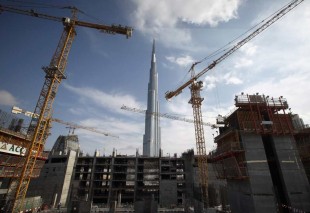

2800 new hotel rooms can't dampen Dubai occupancy

Hotel occupancy rates of 80 percent were maintained in Dubai during 2013 despite nearly 2800 new rooms being added to the supply chain, Ernst & Young has said in a report.
Its Middle East Hotel Benchmark Survey said Dubai's tourism market "rapidly absorbed" the influx of new hotels and continued to perform "exceptionally well".
Commenting on the survey, Yousef Wahbah, MENA head of transaction real estate at EY said: "Several GCC cities, notably Dubai, Manama, Jeddah and Kuwait City recorded positive change in their hospitality key performance indicators in 2013, compared to 2012."
He said average daily rates (ADR) in the emirate increased by 6.4 percent from 2012 resulting in an overall RevPAR (revenue per available room) of $223 in 2013, an increase of 5.9 percent from 2012.
The report showed that both Abu Dhabi and Al Ain also witnessed an increase in RevPAR of 7.4 percent and 13.5 percent respectively.
Wahbah said: "The UAE's stable occupancy rates and increases in RevPAR in December 2013 can be largely attributed to the peak season for tourism, given the country's mild winter weather. December has always been a peak month for tourism in the Emirates, attracting visitors from the region, as well as from around the world, to its many tourist attractions."
The report also showed that Manama witnessed an increase in RevPAR of 10.8 percent during 2013, compared to 2012 while average occupancy in the city increased from 37 percent in December 2012 to 42 percent in December.
Jeddah recorded a 9.3 percent increase in RevPAR during the year, mainly due to an increase in corporate demand in the city, as well as the lack of new supply of 4 and 5 star hotel rooms.
The survey also said that Kuwait City witnessed an increase in RevPAR of 3.7 percent in 2013, compared to 2012, despite approximately 753 new rooms coming online during the year.
Doha's hospitality market witnessed a decrease in RevPAR of 5.4 percent in 2013, mainly due to a drop in ADR from $265 in 2012 to $252 in 2013.
Wahbah added: "The GCC region recorded positive growth, but markets in the Levant and North African region saw a decline in performance compared to 2012. However, favourable winter weather conditions - compared to other parts of the world - should continue to support the regional hospitality market through the first quarter of 2014."